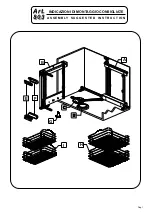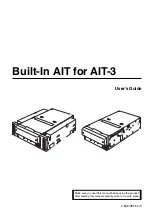
Protecting cables
Damage to the cables can affect the performance of your storage system. Observe the
following guidelines to protect the cables:
■
Keep cables away from sharp edges or metal corners.
■
When bundling cables, do not pinch or constrict the cables.
■
Do not use zip ties to bundle cables. Instead, use Velcro hook-and-loop ties that do
not have hard edges and which you can remove without cutting.
■
Never bundle network cables with power cables. If network and power cables are not
bundled separately, electromagnetic interference (EMI) can affect your data stream.
■
If you run cables from overhead supports or from below a raised floor, include
vertical distances when calculating necessary cable lengths.
■
If you use overhead cable supports:
●
Verify that your supports are anchored adequately to withstand the weight of
bundled cables.
●
Gravity can stretch and damage cables over time. Therefore, do not allow cables to
sag through gaps in your supports.
●
Place drop points in your supports that permit cables to reach racks without
bending or pulling.
■
Unintentional unplugging or unseating of a power cable can have a serious impact on
the operation of an enterprise storage system. Unlike data cables, power connectors
do not have built-in retention mechanisms to prevent this from happening.
To prevent accidental unplugging or unseating of power cables, the storage system
includes a rubber cable-retention strap near the AC receptacle on each controller.
These straps, shown in the following image, loop around the neck of a power cable
connector, and the notched tail is slipped over the hook of the restraining bar fixed to
the storage system.
Cabling full-width modules
When cabling full-width modules, route the cables horizontally, so that they do not
interfere when replacing a module.
Ensuring adequate airflow
Managing cables
Appendix D: Data and power cables
Hitachi Virtual Storage Platform G900 Hardware Reference Guide
102
















































